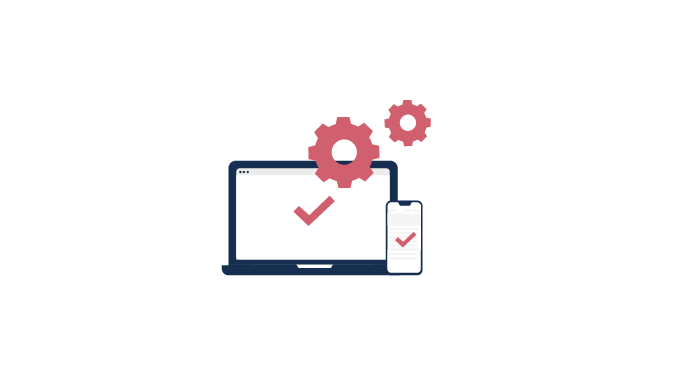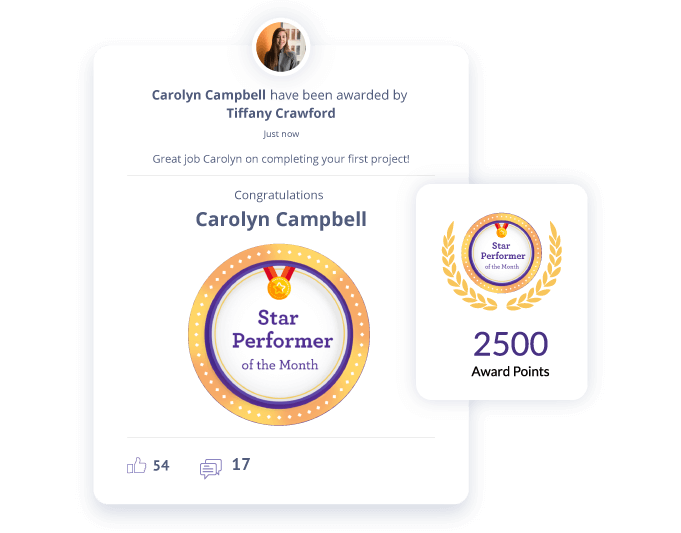How To Start A Peer-to-Peer Recognition Program?
Beginning a peer-to-peer recognition program can be an excellent way to boost morale and motivation within a group or organization. This program encourages individuals to recognize and appreciate their peers' accomplishments and contributions. In return, it helps strengthen bonds and foster a positive work environment.
But how can you kickstart the program, and what is the starting point? This article will discuss everything you need to know about it.
Let's delve in.
What Is Peer-to-Peer Recognition?

Peer-to-peer recognition occurs when peers acknowledge or appreciate an individual's accomplishments or contributions. It includes receiving an award or being praised by other team members or a group. Moreover, it helps boost an individual's sense of accomplishment while improving morale and motivation.
Recommended Resource: The Ultimate Guide To Employee Rewards and Recognition
How Important is it to have a Peer-to-Peer recognition program?
The practice of peer-to-peer recognition, especially in the current workplace, has become critical. Employees like to get appreciated by peers, which validates their skills and presence in the workplace. And this significantly has a positive impact on how they adapt well to the workplace setting.
But apart from that, what are the things that make it important?
Here are a few pointers that will help you understand the need for peer-to-peer recognition.
-
Develops positive working relationships between employees.
-
Provides good opportunities for leaders to improve team dynamics.
-
Increases job satisfaction and employee morale which helps in productivity.
-
Promotes effective communication and collaboration that results in a positive outcome for the organization.
-
Creates a culture of appreciation in the workplace and reduces any chances of toxicity.
The main focus is to leverage the program and reap its benefits. And with the correct approach, one can achieve a workplace that employees will love.
But what's the correct approach? Let's have a look at it.
Read more: Empower the Workforce With A Culture of Peer-to-Peer Recognition
5 Ideas To Start A Peer-to-Peer Recognition Program
1. Define Goals

To get started with a peer-to-peer recognition program, first identify the goals and objectives of the program. The goals can include things like,
-
Improving teamwork.
-
Increasing productivity.
-
Fostering a positive work culture, etc.
The program's objectives will work as the backbone and guide the workforce. Without any goals, it is likely that the program will not be successful.
Along with the goals, establish guidelines for recognizing and rewarding peer achievements. The guidelines can be-
-
Setting specific benchmarks for achievement.
-
Creating a system for nominating and voting on peers for recognition.
Make sure that the program is simple yet effective with its goals. This will ensure that everyone in the organization adapts well to the program.
Ensure that the goals of the program align with the organizational values and mission.
2. Onboard the Right Tools

In order to improve peer-to-peer recognition, you need to have a comprehensive onboarding strategy. You should leverage this opportunity by using the right onboarding tools. While onboarding the right tools for peer-to-peer recognition, consider the below-mentioned factors-
-
Choosing a tool that is easy to use and navigate is important. This will make employees more likely to use the tool and participate in the program.
-
The tool should be easily customizable to meet the needs of the organization. It can include recognition categories, badges, and tracking the recognition data.
-
The tool should be accessible and available across multiple platforms and devices. It will allow employees to participate in the program regardless of their geographical location or device.
-
Whatever tool you choose it should integrate seamlessly with other systems the organization uses. This includes existing HR systems, email platforms, and communication tools.
While we are on it, let us shed some light on one of the ingenious platforms that offer innovative tools and solutions for better peer recognition. Vantage Circle is an AI-powered and automated that fits the scene well. It is highly customizable with a wide range of badges and award campaigns. It also has an in-depth analysis and reporting structure that enables you to understand the gaps in the workforce.

It is designed accordingly to the needs of an organization that will enhance the overall employee experience.
3. Make Room for Orientation Sessions

One key element of your peer-to-peer recognition program is to spread awareness about it. For successful implementation, the employees should be educated about it. It will help them understand what and how it works. With no prior knowledge about peer recognition, the workforce might not be enthusiastic about it and all your efforts will be in vain. And that is something which you can avoid with the right approach.
But you can encourage participation by conducting orientation sessions. These sessions will enable you to educate the employees about peer recognition and its benefits. The orientation session can cover topics such as-
-
The basics of peer-to-peer recognition.
-
When and how to show peer recognition.
-
How to use the tools onboarded by the organization.
-
How frequently should it be done to increase effectiveness?
-
What is the role of a leader, and how are the employees a significant part of it?
Ensure that everyone is clear about the topic. Hand the employees various resource materials that will help them grasp extra information. And if the employees have any questions, you can conduct a Q&A session to clarify the program.
Make sure that the session is held on a specific date so that everyone can attend it.
4. Be a Leader

As a leader, one must have several leadership qualities to promote peer-to-peer recognition. These qualities are important to implement an actionable program in the organization. Some of the qualities include the following-
-
Be an advocate for the value and benefits of peer-to-peer recognition. This includes the objectives of the program, highlighting its success and achievements done through it.
-
As a leader, be proactive and take the initiative in implementing and managing the program.
-
Be fair and minimize any kind of bias in the recognition process. Ensure that all individuals have an equal opportunity to get recognition for their
contributions. -
Encourage your teams to offer recognition and encouragement to their peers at every chance they get. For instance, if you are organizing an annual spirit week celebration, arranging activities like appreciation day will be a great initiative from your side. Similarly, you can encourage gift-giving during special days like valentine’s Day, thanksgiving, and Christmas.
-
Being the leader, become a role model for the behavior and values the recognition program will promote. Be active in recognizing and appreciating the efforts of your employees and supporting them. This will set an example for the rest of the workforce.
By doing these, you will lead the employees in fostering a culture of appreciation within the organization.
Recommended Resource: 25 Leadership Qualities That Makes You A Good Leader
5. Monitor the progress of the program

One of the essential steps in successfully implementing a peer-to-peer recognition program is monitoring it. You can do this by-
-
First, establishing a goal will help guide the program in the right direction.
-
Second, tracking and recording the data like the number of recognitions, types of achievements being recognized, and the impact of recognition on the workforce.
-
Third, collect feedback from the employees with the help of surveys. This will enable you to work on the program's improvements and align them according to the organization's needs.
You can work on collecting feedback by using Vantage Pulse. It is a survey tool that is customizable according to the needs of the organization. With the help of these tools’ in-depth reports, you can analyze the program's growth and take action accordingly.
Organizations can improve the program's effectiveness and boost employee experience by taking these essential steps.
Prepare an in-depth report to have a good understanding of the success of the program.
Summing it Up!
Beginning a peer-to-peer recognition program can be an excellent way to boost morale and motivation in an organization. This program encourages individuals to recognize and appreciate their peers' accomplishments and contributions. In the long run, this helps strengthen bonds and foster a positive work environment. You just need a strategic approach and a plan that fits best for the workforce.
The aim should be keeping recognition at the heart of your work culture and driving sustainable success.

















